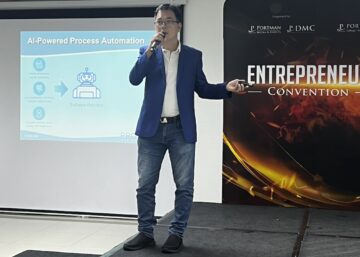
Ooi Kuan Hwa has spent more than 10 years of his career in construction, manufacturing operation and factory setup. He is currently the Business Development Manager of CodeTinker, where he flexes his expertise in helping clients to streamline their warehouse operation and supply chain management. During SME Innovation Stories #7, we had the opportunity to interview Kuan Hwa, as we discussed about the common mistakes faced by SMEs in Malaysia when digitizing their warehouses, as well as the strategies to how to overcome them.
Thomas Cheah: Are there a lot of warehouse managers in Malaysia that are using digital tools and technology to manage their warehouse?
Ooi Kuan Hwa: There are different types of warehouse, depends on the nature of business. For example, the warehouse operation for retailers and distributors is somewhat different than manufacturers. Most warehouses are still using traditional pen and paper form to keep records and signature. Excel spreadsheet is commonly used for stock keeping records.
Thomas Cheah: What are the common reasons stopping them from using Warehouse Management System (WMS)? Are there any business risks if they don’t take proactive action?
Ooi Kuan Hwa: The typical dilemmas faced by SMEs where their focus is often directed towards revenue generating activities, such as sales and marketing, while improvement on internal process and operation is usually neglected. To that extent, sometimes they did not realize the inefficiency that is slowly eating into their profit margins. As a result, they could be losing their competitiveness due to high operation cost as compare to competitors. Their inability to catch up with clients’ expectations might lead to loss of sales and declining market share over time.
Thomas Cheah: What are the common mistakes faced by SMEs in Malaysia when digitalizing their warehouses?
Ooi Kuan Hwa: Although this may sound counterintuitive, a lot of business owners do not have deep understanding of the problems and challenges of their warehouse operation. Most of them just have the bird’s-eye view of the common day to day issues. Due to this, they could be choosing a warehouse solution that does not bring apparent benefits to their businesses. Another aspect that is typically overlooked is clear communication between stakeholders. Digitalizing warehouse often requires changes in how work is done and therefore it is a collective effort that requires commitment and clear communication from leadership to every stakeholders.
Thomas Cheah: Based on your experience, what are the best practices that will improve the success rate of warehouse digitalization?
Ooi Kuan Hwa: The first thing is to identify a project owner with task force assembled from various stakeholders. The project task force will need to define the success criteria for the warehouse digitalization project, identify the priority areas, define the project scope, and analyze the resources gap. Based on this, they can then start evaluating vendors and decide on the best one for them. Another best practice is to manage the implementation by phases, where modules are rolled out progressively to manage risks and increase success rate. The initial phase should be planned with smaller scope as pilot run, where the problems and issues will be solved along the way to minimize the impact to overall business operation.
Thomas Cheah: To wrap up, how would you advise warehouse managers to get started in planning their warehouse digitalization process?
Ooi Kuan Hwa: Business owners should start thinking of what direction the business is going. All systems should be planned to cater their near future scenario and long-term goals. They can start talking and brainstorming with the team to identify the pains and problems in their day to day operation. If you can find any manual or time-consuming or repetitive tasks, they should be the first to be systematized and automated. Other preparations that they can work before engaging vendors are optimizing their warehouse layout, properly labeling and barcoding all products. If they have an existing Warehouse Management System, it will be useful to identify the current gaps of the system.
What is SME Innovation Stories Series?
This is a talk series that shares and analyzes case studies of digital transformation projects in the SMEs. The objective is to provide inspirations for SME business owners and CEOs on variety of ways they can innovate their business. The discussion will be presented in storytelling form of real-world projects, instead of theories and concepts.


